This is a topic that I have not discussed with anyone for years and years, if at all.
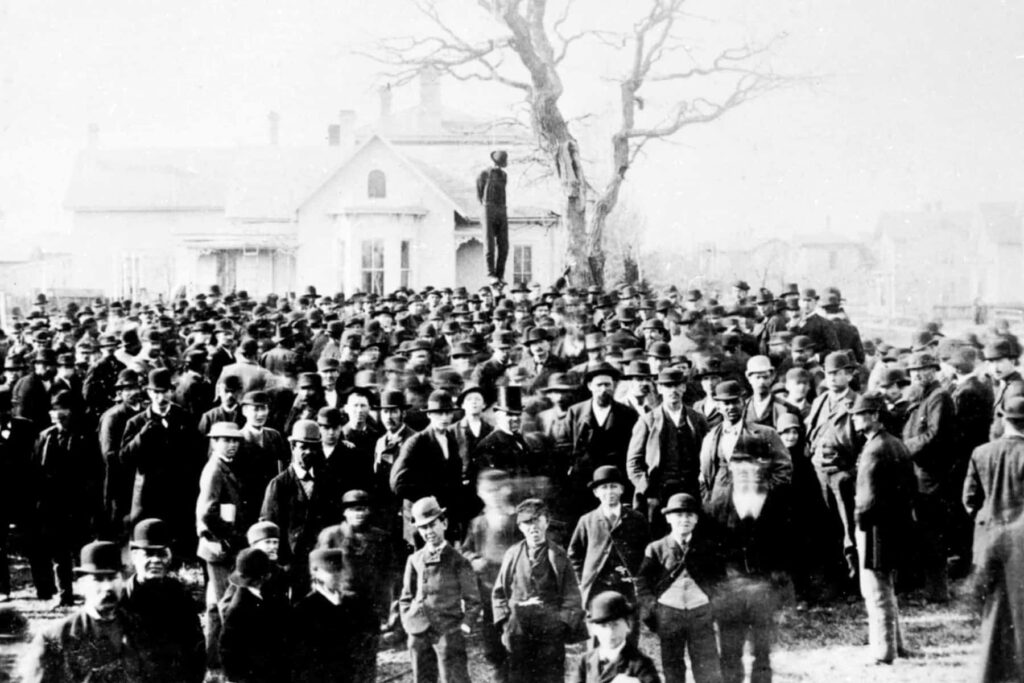
Yes, I was aware that lynching in America was a brutal practice used primarily from the late 19th century through the mid-20th century, disproportionately targeting African Americans.
But I had no idea of the extent to which it occurred.
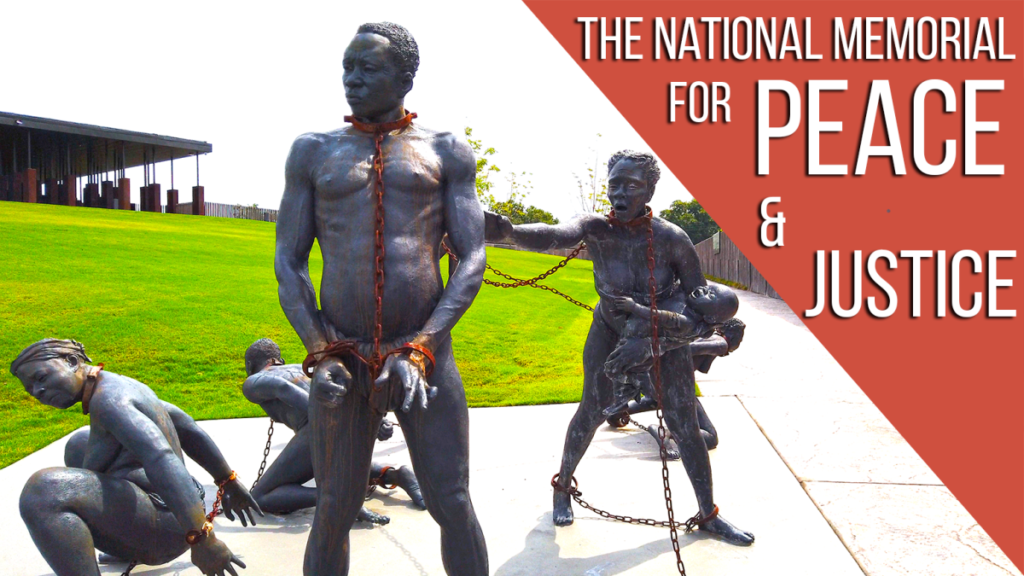
The National Memorial for Peace and Justice, which I visited during my trip to Alabama in November, is only 8 years old and located in Montgomery Alabama. It has provided me with an understanding of the brutality and extent to which lynching occurred in our country.
I was shocked. I had no idea how widespread it was. I had no idea how random it was. I had no idea how brutal it was. I had no idea how specious the reasons were for hanging someone. I had no idea how lawless these actions were.
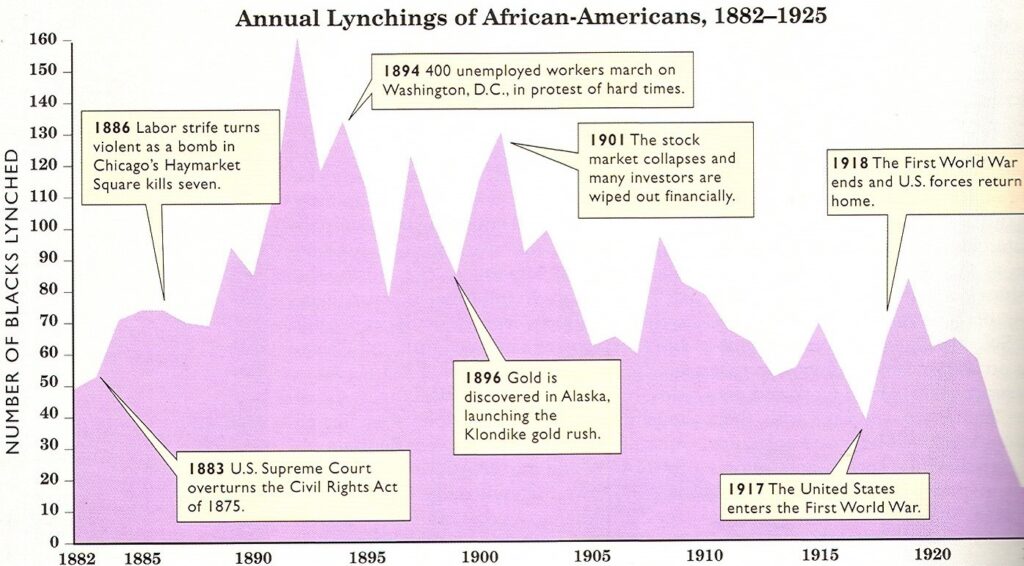
Between 1877 and 1950, more than 4,400 documented lynchings occurred in the United States, with the vast majority in Southern states.
Allegations of crimes, violations of racial norms, or mere perceived infractions could lead to mob violence. Often, no trial was held, and accusations were frequently fabricated. Lynching reinforced a climate of fear, denying Black Americans their rights and perpetuating systemic racism.

The memorial is so powerful in so many ways. It is totally outdoors. Corten steel rectangular columns hang from the outdoor structure. Corten steel, also known as weathering steel, is a type of steel alloy that develops a protective rust-like layer when exposed to the elements.
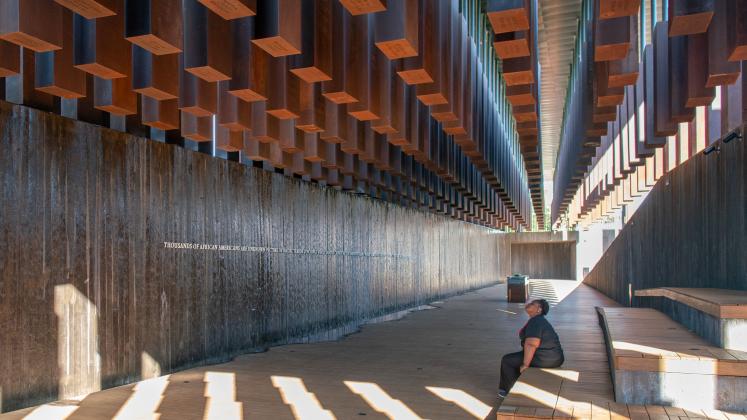
The steel columns remind you of a person hanging from a tree after being lynched. Each steel rectangle column represents one county in the United States, and it has the name and date of all victims documented to have been lynched in that county.
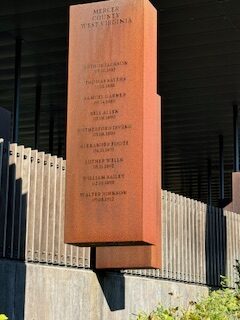
There are 800 of them!
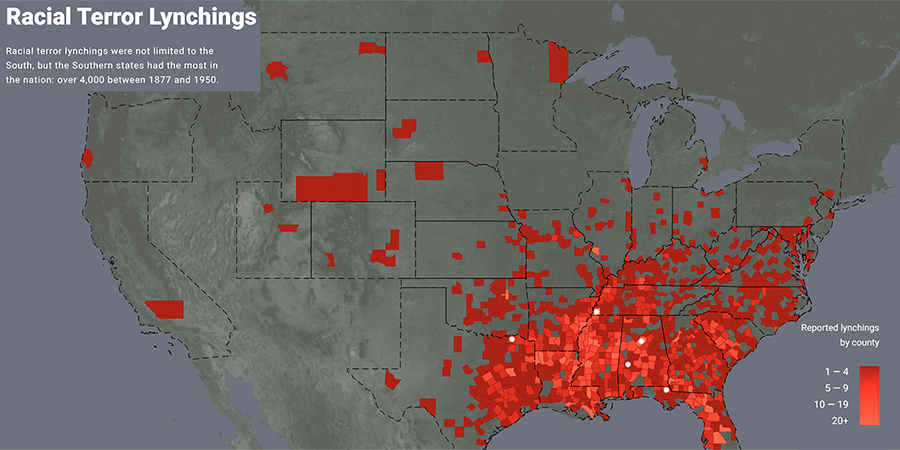
Of the 3,143 counties in the United States, 800 or 25% were involved in lynchings.
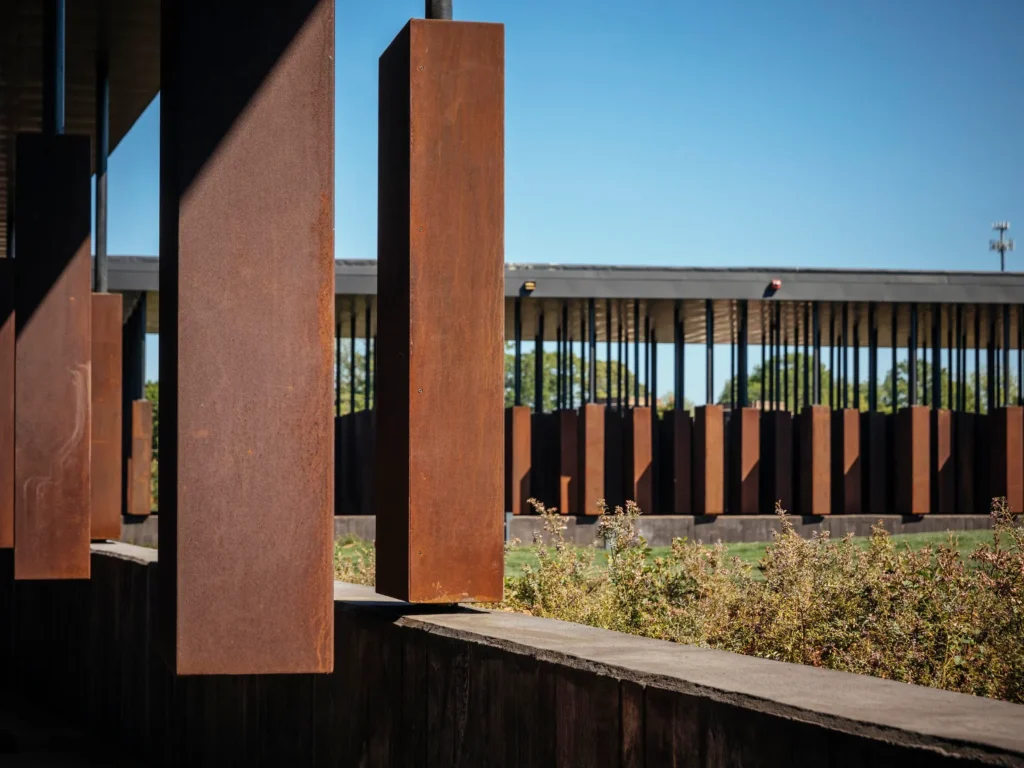
You walk underneath some, you walk around and through others. Suspended from above, the columns create a visceral and solemn atmosphere.
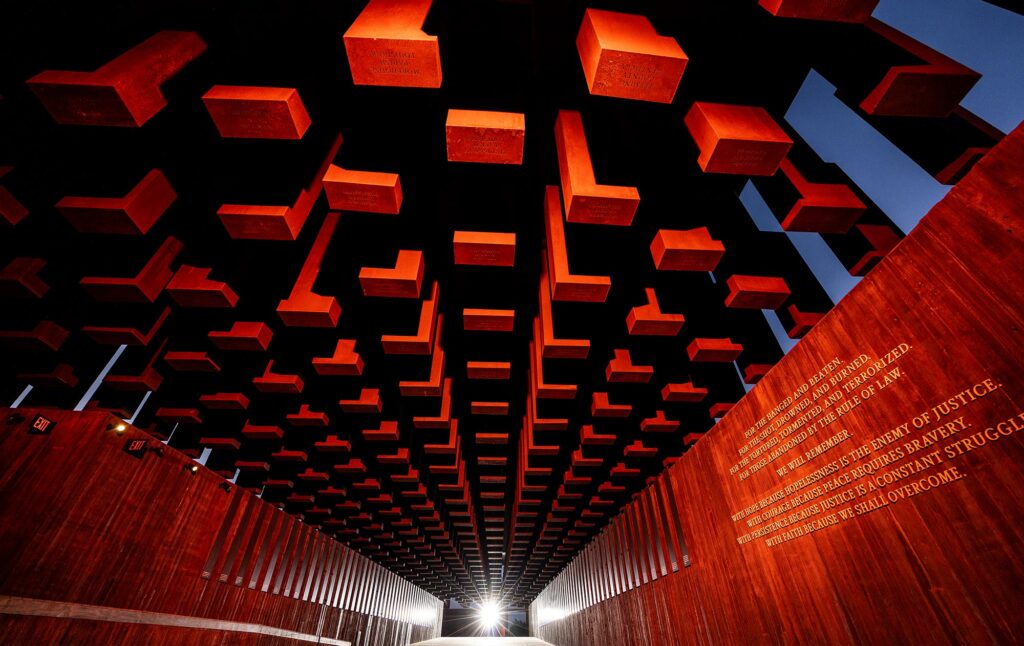
You walk at your own pace, and in total silence. The walk under and through the columns takes more than an hour to complete.
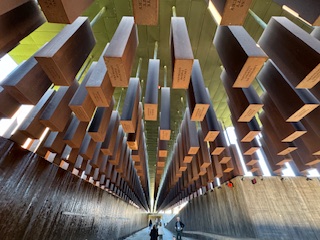
There is plenty of space to contemplate, grieve, and process the emotional weight of the site.

The memorial also includes sculptures and installations, such as a powerful depiction of enslaved individuals in chains and plaques explaining the history of racial violence in the U.S.
The Memorial made an impression on me. It had an impact. I was more than moved. I felt at the end of the experience the same way I felt after coming out of the Holocaust Museum in Washington DC. I was horrified.
I – albeit naively — could not believe that such a thing – the lynching of 4,400+ Blacks – could happen in this country.
I also could not believe that I was just finding out about the extent to which lynching took place in our country.

The National Memorial for Peace and Justice has received significant national recognition and accolades for its profound contribution to public memory and education about racial injustice in the United States.
Implications and Importance
- Historical Reckoning: The memorial shines a light on a dark chapter of American history often underrepresented in mainstream narratives. It demands acknowledgment of these atrocities.
- Education and Awareness: It serves as a powerful educational tool, helping visitors understand the lasting legacy of racial violence and systemic racism.
- Healing and Justice: By naming victims and counties, the memorial encourages communities to reckon with their past and consider paths to reconciliation and justice.
- Global Significance: This memorial echoes other global efforts to confront historical injustices, such as Holocaust memorials. It aligns the U.S. with international human rights dialogues.
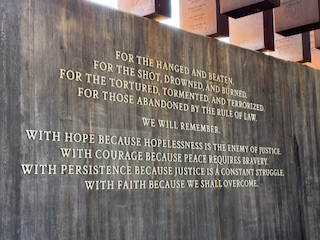
Bottom line. By creating a space that memorializes victims of lynching and examines the enduring impacts of racial injustice, the National Memorial for Peace and Justice not only acknowledges a painful past but also challenges visitors to engage with ongoing issues of inequality, making it a vital component of America’s cultural and educational landscape.
In addition, I believe that the Memorial inspires hope for a more just future by confronting the past with honesty and empathy.
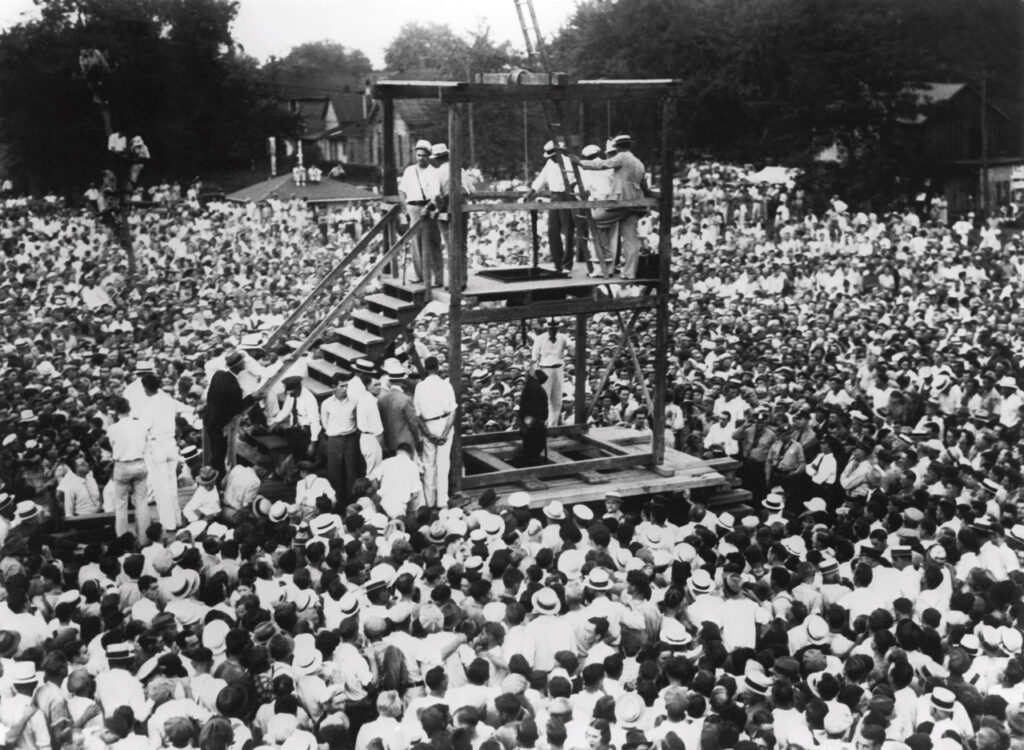
Thanks for sharing your experience, Neil. We, individually and collectively, need to examine ourselves, identitify, repent, and then treat everyone we meet with the dignity and respect that every human deserves.
How can people hate like this?
California’s participation in this atrocity are much less well known but heinous as well. As part of his eight-year Hang Tree Series project, my friend Ken Gonzales-Day, a Scripps College professor, documented over 350 lynching cases in California between 1850 and 1935, rivaling Mississippi. The victims spanned the spectrum of people of color, including the lynching of African Americans, Native Americans, Chinese, and Mexican and Latin American people.
Strike that. Hard to rival Mississippi. Alabama a better comparator.
Thanks Neil.
Further education is needed for all of us. Hard but important.
Neil, the human condition—marked by greed and a relentless pursuit of power—remains a constant, despite centuries of history filled with unimaginable injustices and brutalities across the globe. Yet, you offer a beacon of hope, encouraging us to reflect and open our hearts to the truth: that people, just like you and me, are capable of unthinkable atrocities. These acts of hatred and violence continue to occur, perpetrated by individuals who live among us.
Thank you for reminding us of our shared humanity and the power of choice. As we navigate life in a free America, your message serves as a poignant reminder that our decisions today shape the actions of tomorrow. Wishing you peace this holiday season and always.
Warm regards,
Jane
jane,
so beautiful, so moving, so thoughtful. thank you!
neil